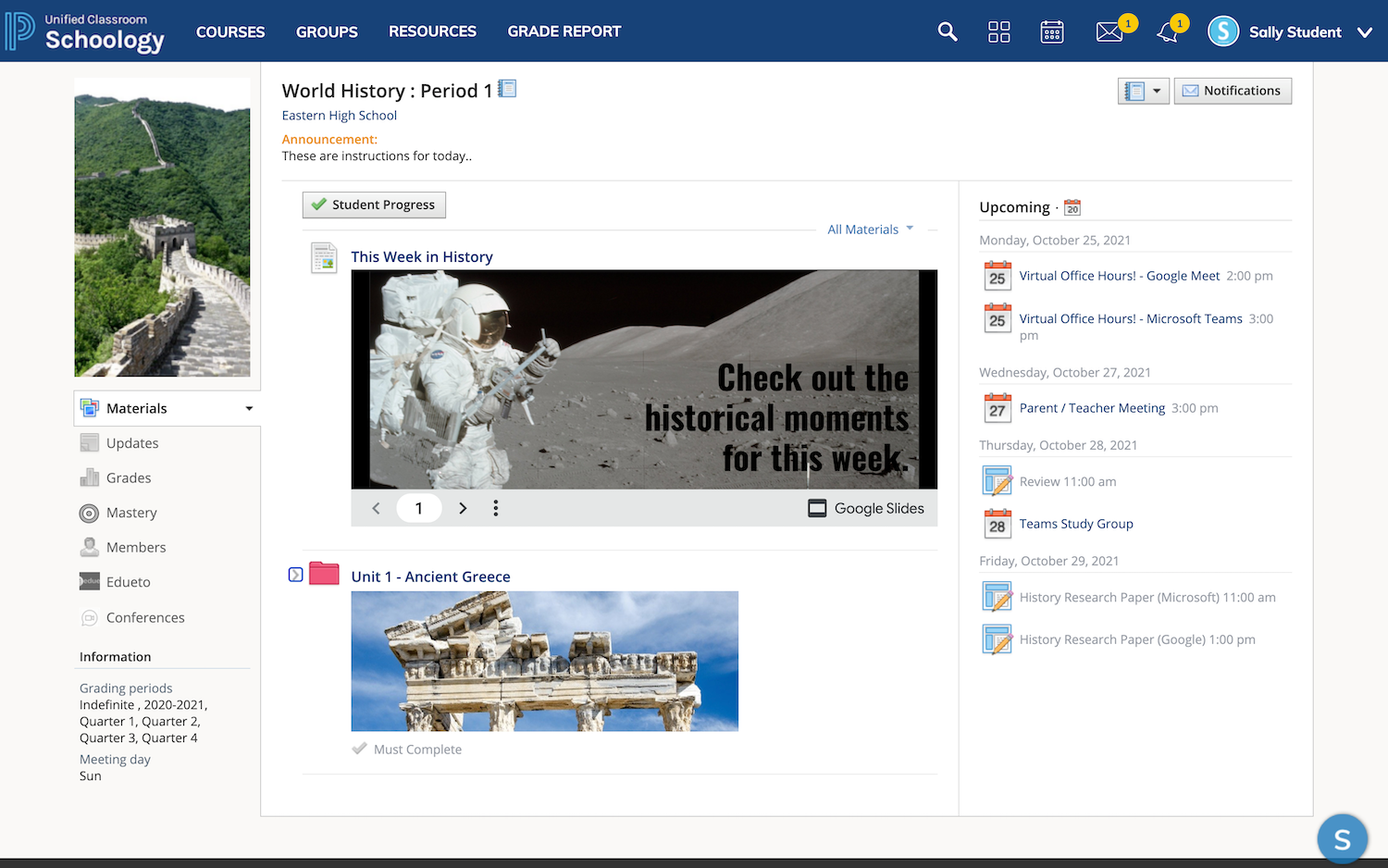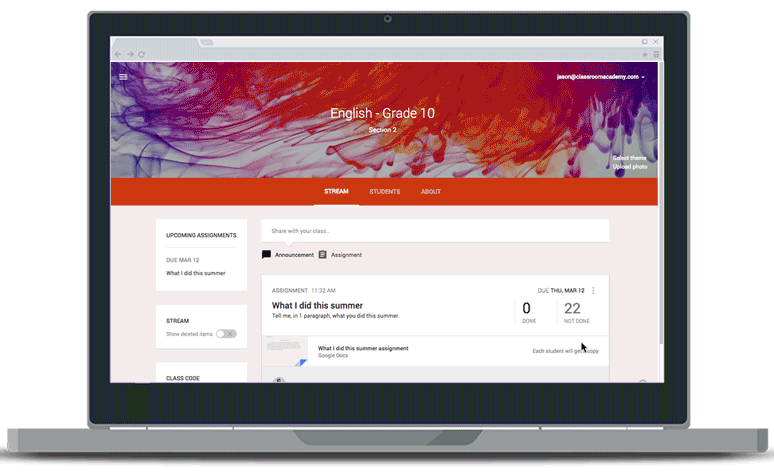Incorporating digital learning platforms in K–12 education has become increasingly important. These platforms aren’t just tools for delivering content; they’re comprehensive ecosystems that enrich the learning experience for students and educators alike.
Among the leading contenders in this arena are Schoology and Google Classroom. These platforms, designed to augment the traditional classroom experience, offer a range of features tailored to meet the demands of modern educational environments. In this post, we compare the most significant features of both and discuss how they cater to the needs of schools of varying sizes.
Breaking down the core features
Schoology: The dedicated learning management system

Schoology is a learning management system (LMS) that replicates the K–12 classroom experience. It focuses on providing a seamless educational environment that mirrors traditional learning methods. Key features include
- Robust course management: This LMS enables educators to create, manage, and distribute academic content effectively.
- Advanced assessment tools: It provides a variety of assessment methods, including quizzes, tests, and assignments.
- Collaborative tools: Schoology facilitates group discussions, projects, and peer interaction.
- Customizable interface: It offers a flexible platform that users can tailor to their specific educational needs and preferences.
- Pricing: Schoology offers a basic free version and a paid enterprise version that includes additional features like course templates, web hosting, and an aggregated calendar. (Contact PowerSchool for pricing details.)
Google Classroom: The versatile educational companion

Google Classroom is one of the vast array of Google’s services. It stands out for its integration with Google’s suite of tools, making it a versatile choice for educational institutions. Its primary features include
- Seamless integration with Google services: Users have easy access to tools like Google Docs, Sheets, and Drive.
- Simplified assignment management: Google Classroom streamlines the process of creating, distributing, and grading assignments.
- User-friendly interface: Its intuitive design makes it accessible to users with varying levels of tech-savviness.
- Effective communication tools: It provides robust options for teacher-student and student-student interactions.
- Pricing: Its Education Fundamentals plan is free for qualifying institutions. There are three more paid tiers designed for those who don’t qualify for the free plan or who need more features and customization. The Education Standard plan is $3 per student, per year, and the Education Plus plan is $5 per student, per year. Google Classroom also offers a Teaching and Learning Upgrade for $4 per license, per month.
Focusing on features that enhance the educational journey
The unique features of these learning platforms set the stage for a more engaging, efficient, and tailored educational journey. Let’s briefly compare them:
- Schoology’s messaging capabilities are more advanced, providing a more comprehensive communication tool within the LMS.
- Notification and alert systems in both platforms ensure that users stay informed about course updates, assignments, and other essential communications.
- Google Classroom has the edge when it comes to ease of use. It has a straightforward, minimalistic design, and it’s familiar for those already using Google products.
- While Schoology offers robust integration capabilities within educational tools, Google Classroom’s advantage lies in its seamless connection with various business and productivity applications within the Google ecosystem, making it a more versatile choice in certain scenarios.
Choosing a platform that aligns with your goals
While both platforms are focused on K–12 education, their approaches differ significantly. Schoology’s focus is on creating a comprehensive LMS experience with a wide range of educational tools and customizable options. Google Classroom, meanwhile, emphasizes ease of use and integration with a broader range of services — appealing to those looking for a straightforward and efficient platform. But what if your needs are different?
Jotform is a powerful alternative to traditional learning management systems like Schoology and Google Classroom, particularly for educators seeking specific functionality. Features like customizable quizzes and the ability to collect and monitor data efficiently through Jotform Tables make it a practical choice for educational institutions.
The free online survey maker — available to students with valid educational IDs — supports unlimited survey submissions and is ideal for feedback, research, and classroom activities. Plus, Jotform offers a 50 percent educational discount on Bronze, Silver, and Gold plans and a 30 percent discount on Jotform Enterprise. This positions Jotform as a versatile and economical solution for modern educational requirements. Try it for free today.
Photo by Julia M Cameron






































































































Send Comment: